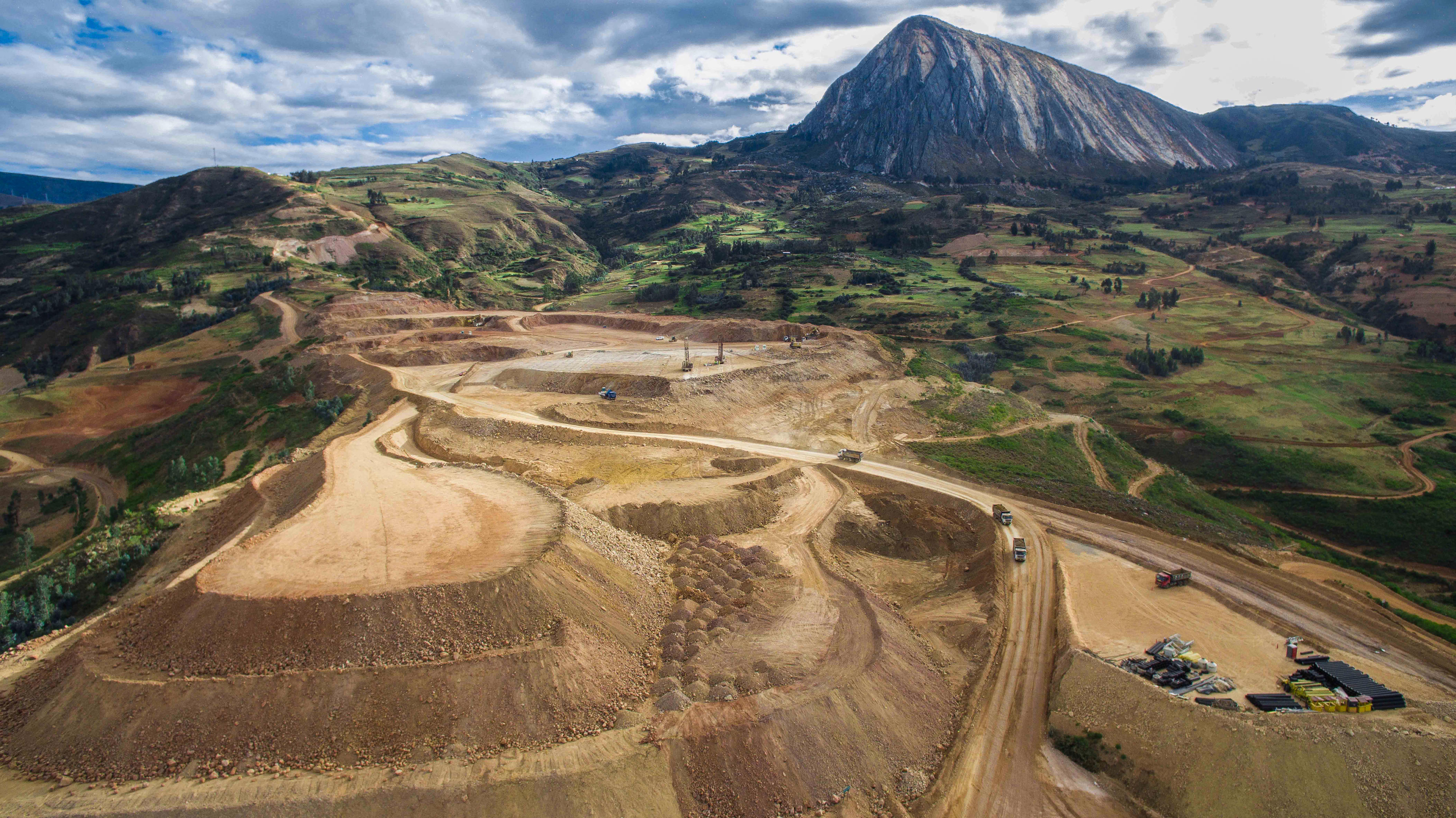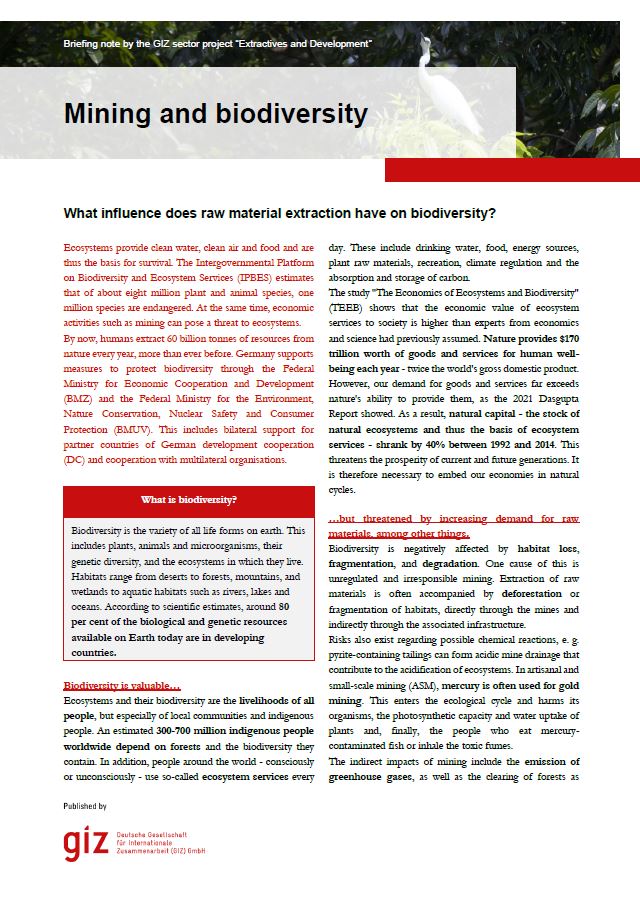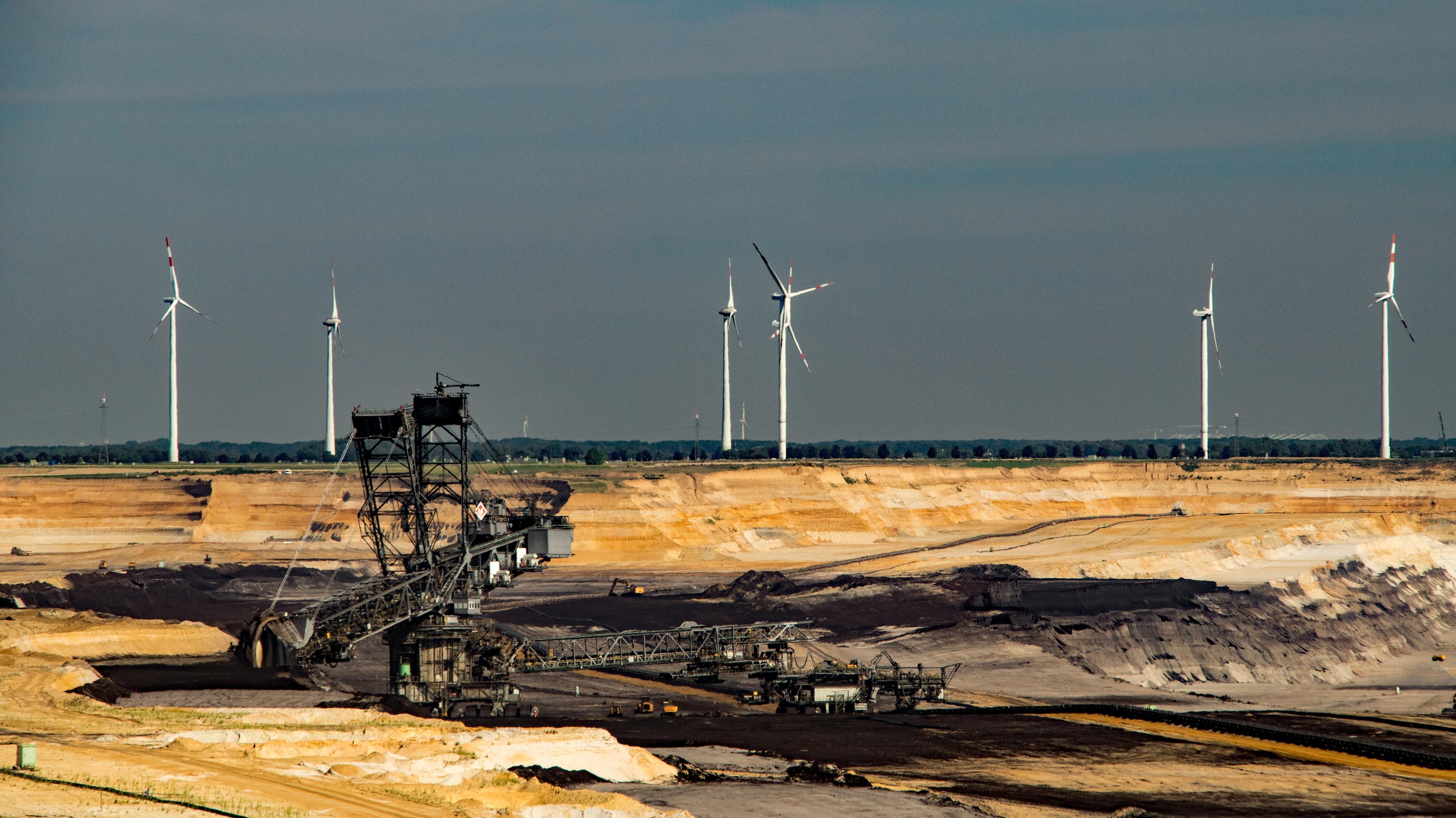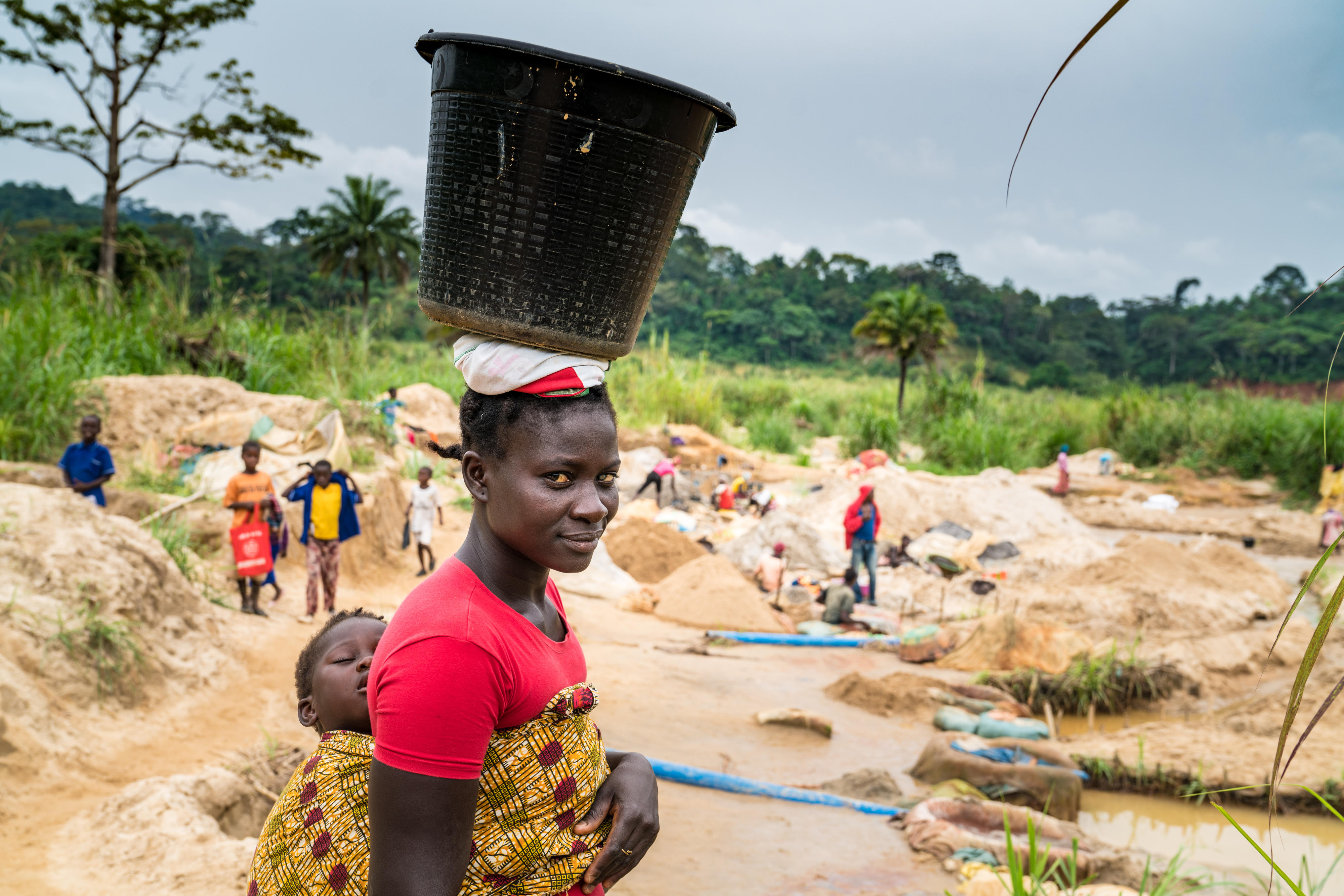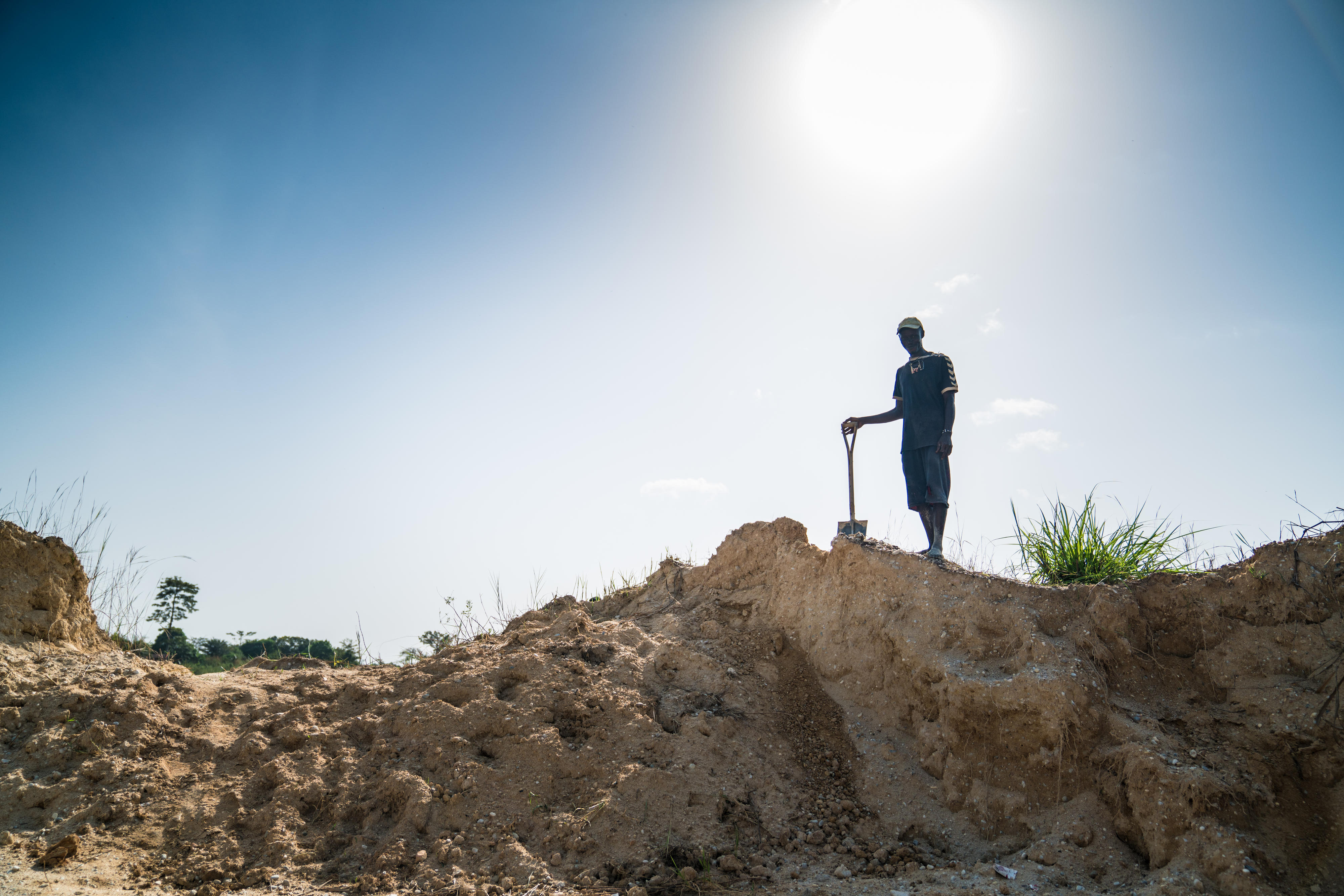Mine in Peru
Copyright© GIZ/Rolando Suaña
Environment, Climate and Society Environment and Mining
Environmental risks in large-scale and small-scale mining
Both large-scale industrial mining (LSM) and artisanal and small-scale mining (ASM) impact the environment in various ways. Mining of raw materials (excluding coal) causes 7 % of deforestation in developing countries and emerging economies, according to a 2019 study (External link), making it the 4th largest driver of deforestation. Mining activities may also lead to a loss of biodiversity through habitat fragmentation, degradation and destruction. The construction of mining-related infrastructure such as roads or railways also provides access to previously untouched areas increasing the ecological risks.
Other environmental risks associated with mining activities relate to water. The mining and metals industry requires large amounts of water for the extraction and processing of ores. The formation of acid mine drainage and the use of chemicals (e.g., cyanide in gold leaching in large-scale mining and mercury in gold amalgamation in small-scale mining) frequently pose threats to the environment around mine-sites. Spills and leaks from tailings ponds and poor mine closure are also risks to ecosystems and surrounding populations. Contaminated sites from past mining activities remain a major environmental problem, especially in developing and emerging countries.
Approaches to minimising environmental risks
Mining is not possible without environmental impacts. However, solutions to minimise environmental risks do exist and are constantly developed. For example, the use of desalinated seawater and recycled water can lower the pressure of mining activities on water systems. Environmental protection measures can reduce impacts on biodiversity and forests during project planning, implementation and closure. Areas with high or special biodiversity should be avoided in the phase of exploration, impacts minimised, ecosystems restored and compensatory areas created. This is in line with the principle of mitigation hierarchies, which is based on the four steps of (1) avoid, (2) minimise, (3) restore and (4) compensate. The aim is to avoid a net loss of biodiversity. At the end of a mining project, there are various options for ecological mine closure, such as renaturation or recultivation. Renaturation is an attempt to restore the area to as close to its natural state as possible. In this process, the area is left to a natural and longer-lasting colonization process. In contrast, recultivation takes place more quickly and, in practice, usually involves rapid planting of the area. Although this can quickly reduce erosion, for example, the biodiversity is lower and thus less natural. These measures are not only important for the environment, but also create jobs, which can be a social-economic factor after mine closure.
The relevance of sustainability in the raw materials sector and stronger cooperation between industrialised nations and developing and emerging countries is increasingly becoming a focus of development policy in view of the global environmental crises.
Thus, industrialized countries must also take responsibility. The energy and mobility transition must not be achieved at the expense of the environment and the population in the mining countries. For it to be globally equitable, fair and responsibly designed supply chains are needed: from raw material extraction to the end product.
Sector Programme commitment
The Sector Programme is committed to minimising environmental risks in the mining sector. One example is the Forest Smart Mining approach, which addresses the threats of mining activities to forests and formulates possible mitigation measures. With support from the Sector Programme“Extractives and Development”, a first report (External link) on Forest Smart Mining was published in 2019. This short video (External link) summarises what the interface between mining in and around forests is essentially about. A briefing information on mining in forests can be found here.
